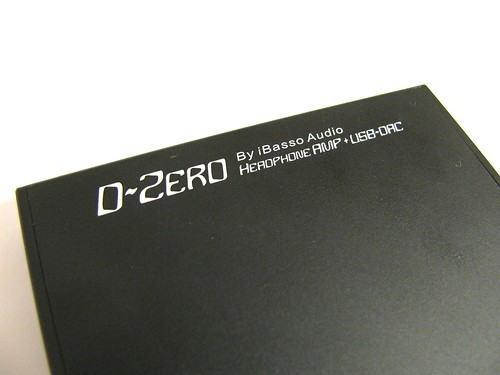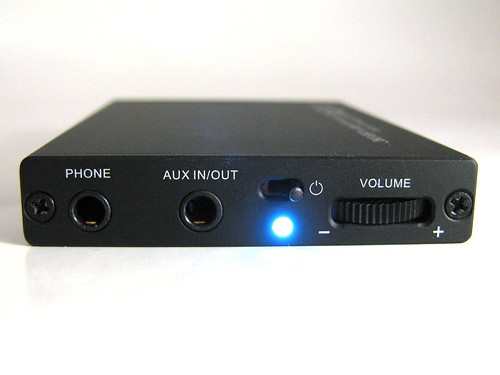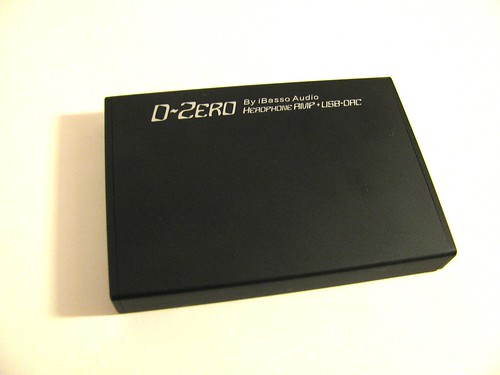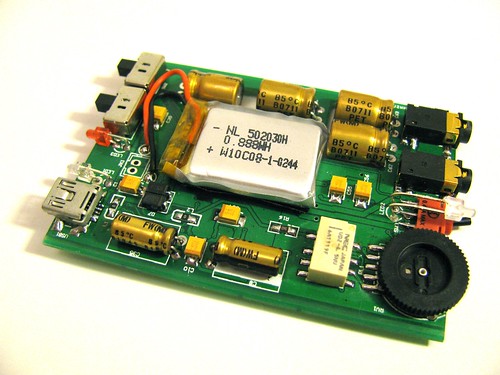 Based in Shenzhen, China, iBasso has quickly become an audio company to watch out for. Their fast iteration of products has shown that iBasso has the engineering talent to pump out new products every few months while keeping their prices insanely low. While the original iBasso products were nothing to write home about, they were loved for their decent build quality and performance above what their prices would have suggested. Does the iBasso D-Zero maintain this philosophy? Let’s find out.
Based in Shenzhen, China, iBasso has quickly become an audio company to watch out for. Their fast iteration of products has shown that iBasso has the engineering talent to pump out new products every few months while keeping their prices insanely low. While the original iBasso products were nothing to write home about, they were loved for their decent build quality and performance above what their prices would have suggested. Does the iBasso D-Zero maintain this philosophy? Let’s find out.
Hardware/Design
 The packaging of the D-Zero is nondescript. It comes in a simple box with the iBasso logo on it. Inside you’ll find foam holding the diminutive DAC/amp. Dig deeper and you’ll find a warranty card, USB cable, 3.5mm to 3.5mm cable, and carrying pouch. This is everything you need to start listening to music from the D-Zero. There is no wall wart for charging so you’ll have to plug it into a computer and flip the “charge” switch on to get it juiced up.
The packaging of the D-Zero is nondescript. It comes in a simple box with the iBasso logo on it. Inside you’ll find foam holding the diminutive DAC/amp. Dig deeper and you’ll find a warranty card, USB cable, 3.5mm to 3.5mm cable, and carrying pouch. This is everything you need to start listening to music from the D-Zero. There is no wall wart for charging so you’ll have to plug it into a computer and flip the “charge” switch on to get it juiced up.
When I first held the D-Zero in my hand, I was surprised at how solid and light it felt. When I first held the D-Zero in my hand, I was surprised at how solid and light it felt. It weighs almost nothing, giving the impression that it’s made of plastic but it is actually made out of aluminum. The entire chassis is made out of aluminum, including the front and rear plate. The only plastic parts on this amp are the switches and volume slider. Its matte black, powder coated finish won’t turn any heads but I like how inoffensive its design is. It just blends into the background. After all, this device is for listening and not looking at. It is almost as wide, a bit thicker, and 2/3 as tall as my iPhone 4.
On the front you’ll fine a headphone out jack, an aux in/out port, the power switch, and volume slider. On that back you’ll find a mini USB port, a switch to turn on charging, and a gain switch (high and low). Power the unit on and you’ll be greeted with a soft white glow from its LED on the front panel.
One thing I want to note is that the D-Zero grips 3.5mm plugs like a pissed off octopus. While I found it too easy to unplug headphones from the T3, I find it a bit difficult to unplug headphones from the D-Zero. Hopefully it will be cured with some break-in time.
Internals
I was a bit surprised to find this DAC chip being used in such a cheap device.While the D-Zero’s design is nothing to write home about, what’s inside is mighty impressive for this $109 DAC and amp. The DAC chip is the Wolfson WM8740 and it renown for sounding fantastic. I was a bit surprised to find this DAC chip being used in such a cheap device.The D-Zero also features Texas Instruments PCM2706 chip for its USB receiver. This chip works fine for a USB receiver but is limited to 48kHz/16bit so people looking to play higher resolution tracks should look elsewhere.
From poking around inside, I was also pleasantly surprised to find high quality Nichicon capacitors. Everything is well laid out and the circuit board was clean (unlike my T3.) iBasso has some spectacular engineers for having fit DAC, amp, and battery components into such a small chassis.
Battery life
iBasso claims up to 30 hours of play back using just the amp function. Although I couldn’t verify this claim because I’ve been using the D-Zero as both a DAC and amp, I have no doubts that this device will last at least 30 hours on low gain. My T3 would last over 40 hours a week on a charge. If you’re using the D-Zero as a USB powered DAC, you won’t have to worry about charging it as it runs entirely off USB power.
Performance
Out of the box, I was already impressed by how quiet this little box was. Its noise floor is absolutely dead silent. For such a cheap unit, I am impressed by how quiet it is even at low volume. There is no hiss or channel imbalance to speak of. My T3 amp is just a tad noisier (although still very quiet) and has terrible channel imbalance at low volumes. Even though the D-Zero is cheaper, it manages to fix both of these issues.
So how is iBasso getting away with charging more for the T3? It all comes down to amp performance. The T3 is a better stand-alone amp than the D-Zero. The T3 gave me a larger, deeper soundstage with more air around the instruments. In comparison, the D-Zero makes everything sound “smaller” and wasn’t very good at conveying soundstage width or depth.
As for power, the D-Zero seems a bit more powerful than the T3 and powered my AKG K702 to very loud levels. Even though I was listening at almost maximum volume at high gain with my K702, the D-Zero didn’t sound like it was struggling. The T3 on the other hand sounded a bit strained powering those hard to drive cans.
While the D-Zero’s amp section was a bit disappointing, I was blown away when using it as a DAC. While the D-Zero’s amp section was a bit disappointing, I was blown away when using it as a DAC. Compared to using my iPhone’s DAC, the soundstage widened up considerably. The Wolfson chip was very articulate with great detail retrieval. Instrument separation was also much improved. The iPhone DAC made everything sound like a blob while the D-Zero DAC allowed me to pick out details of specific instruments.
I was curious as how the D-Zero compared to my first generation Zero DAC to see if it could stand up to a desktop DAC. I was surprised at how similar these DAC/amp combos sounded. Both had very quiet noise floors but in the end, the desktop Zero DAC won out because it sounded more open and had better attack for faster songs. Instrument separation was also better on the Zero DAC. I think the fact that the Zero DAC does 96kHz/24bit helped achieve a more spacious and quicker sound. Overall, the D-Zero performed admirably but couldn’t stand up against the more expensive desktop DAC.
Conclusion
 iBasso has hit it out of the park with the D-Zero. For $109 you get a very capable DAC and amp combination. This is the perfect device for the budding audiophile that wants a portable setup. While the amp section of the D-Zero is nothing special, the Wolfson DAC chip is really the reason for buying this box. If you’re just looking for a portable amp, look to the T3D (which fixes the channel imbalance of the T3) or the newly released T5.
iBasso has hit it out of the park with the D-Zero. For $109 you get a very capable DAC and amp combination. This is the perfect device for the budding audiophile that wants a portable setup. While the amp section of the D-Zero is nothing special, the Wolfson DAC chip is really the reason for buying this box. If you’re just looking for a portable amp, look to the T3D (which fixes the channel imbalance of the T3) or the newly released T5.
The D-Zero has made listening to music on my work laptop bearable. iBasso has proven itself very capable of designing a great sounding portable DAC and amp and I look forward to seeing what they come up with next.

Comments
6 responses to “Review: iBasso D-Zero portable DAC and amp”
Great and informative review! I just received my D-zero last night and my first impressions are really good!
Thanks for the compliment, David! I really do like this little DAC/amp. It’s a great value.
Nice Review Dude. One question: Does the DAC work with Macs?
Thanks! Yes, the DAC works perfectly with Macs. No drivers needed! Just plug and play.
“If you’re using the D-Zero as a USB powered DAC, you won’t have to worry about charging it as it runs entirely off USB power.”
True, so be careful if you intend to use it with an Android Phone using USB DAC, because it will drain you phone’s batterie really fast!
That’s a great point, ShelBro. I haven’t tried the D-Zero as a USB DAC for my Android yet. Unfortunately the Nexus 4 doesn’t support USB OTG. :(